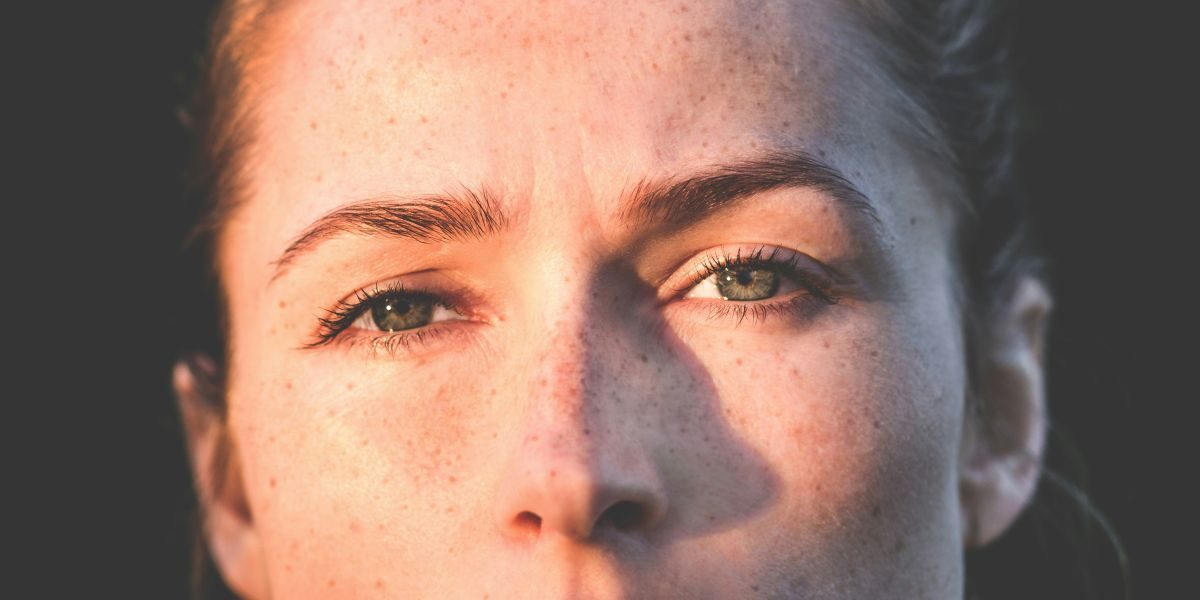Glabellar lines—commonly known as frown lines or “11s”—are vertical wrinkles that appear between the eyebrows. As we age, they may become more noticeable. Caused by repetitive muscle movement and gradual loss of skin elasticity, these lines can contribute to a tired or tense appearance. Fortunately, a range of treatment options is available that may help reduce the appearance of these lines when used under the guidance of a licensed provider.
Understanding Glabellar Lines: Causes and Contributing Factors
What Are Glabellar Lines?
Glabellar lines are dynamic wrinkles that may become static over time. They form from repeated movements of the corrugator and procerus muscles, such as during frowning or squinting. Over time, they may become more deeply set as the skin’s collagen and elastin levels decrease.
Common Causes
- Repetitive facial expressions (e.g., frowning, squinting)
- Gradual collagen breakdown and natural aging
- Chronic sun exposure and environmental stressors
- Individual skin characteristics and genetics
Treatments That May Help Reduce the Appearance of Glabellar Lines
Neuromodulators
Neuromodulators are injectable treatments that work by temporarily relaxing the muscles responsible for glabellar lines.
- FDA-cleared for glabellar frown lines
- Results typically last 3 to 6 months
- Generally recommended for mild to moderate lines
Clinical Reference: Carruthers A, Carruthers J. Botulinum toxin type A for glabellar frown lines: safety and efficacy. Dermatol Surg. 2005.
Ultrasound-Based Skin Tightening (e.g., Sofwave™)
Sofwave™ technology uses synchronous ultrasound parallel beam (SUPERB™) technology to target the mid-dermis and encourage collagen formation.
- FDA-cleared for facial lines and wrinkles
- May help improve skin firmness and reduce fine lines, including in the glabellar area
- Typically involves minimal to no downtime
Clinical Note: While Sofwave is cleared for general wrinkle improvement, direct clinical studies on glabellar-specific outcomes are still emerging.
Dermal Fillers
Hyaluronic acid-based products are injectables that add volume and structure beneath the skin, making them useful when glabellar lines remain visible even when the face is at rest.
- Results are typically visible shortly after treatment
- Effects may last 6 to 12 months, depending on the product
- Must be administered with caution in the glabella due to its vascular sensitivity
Laser Resurfacing
Ablative and non-ablative lasers use laser energy to either remove damaged skin layers or stimulate collagen in deeper layers.
- May improve skin texture and reduce wrinkles over time
- Downtime can vary from a few days to over a week depending on the device used
Reference: Tierney EP, Hanke CW. Ablative fractionated CO2 laser treatment of photoaging: a review. J Drugs Dermatol. 2009.
Microneedling with Radiofrequency (RF)
This treatment combines microneedles and radiofrequency energy to stimulate dermal remodeling.
- Often used to support collagen and elastin production
- Considered less invasive than laser treatments
- May be beneficial for those with mild to moderate glabellar lines
Lifestyle and Prevention Strategies
Sun Protection and Skincare
- Use broad-spectrum sunscreen daily
- Wear sunglasses to reduce squinting
- Use antioxidant-rich skincare ingredients (e.g., Vitamin C, niacinamide)
Healthy Habits
- Stay well-hydrated
- Avoid smoking
- Maintain a regular sleep schedule and reduce stress where possible
Choosing the Right Approach

Consult with a board-certified dermatologist or licensed aesthetic provider to determine which approach is most appropriate for your skin type, goals, and medical history.
Summary
Glabellar lines are a natural part of aging, but a variety of professional treatments are available that may help reduce their appearance. From neuromodulators to ultrasound-based technologies like Sofwave™, there are several evidence-informed options that can be tailored to your needs. With guidance from a qualified provider and consistent skincare habits, you can support smoother, more refreshed-looking skin over time.
References
- Carruthers A, Carruthers J. Botulinum toxin type A for glabellar frown lines: safety and efficacy. Dermatol Surg. 2005.
- Tierney EP, Hanke CW. Ablative fractionated CO2 laser treatment of photoaging: a review. J Drugs Dermatol. 2009.
- Glogau RG. Aesthetic and anatomic analysis of the aging face. Semin Cutan Med Surg. 1996.
Disclaimer: This content is for informational purposes only and should not be considered as medical advice. The effectiveness of treatments, including Sofwave™ and other options, may vary based on individual skin types, goals, and medical histories. Always consult with a licensed, board-certified dermatologist or qualified aesthetic provider before beginning any treatment. The information provided here does not guarantee specific results, and the choice of treatment should be made in consultation with a professional. Individual results may differ, and treatments should be performed under the guidance of a licensed healthcare provider.
Published by Jeremy S.


















